- Home
- Paul Doherty
Isabella and the Strange Death of Edward II Page 7
Isabella and the Strange Death of Edward II Read online
Page 7
Hugh de Spencer comes across as a buccaneer, a pirate, a noble, who feared neither God nor man. He became Edward’s foil, his dagger to strike at the heart of the likes of Thomas of Lancaster and others. Edward wanted revenge and de Spencer would serve up the dish. For the first and only time in his life, Edward proved he was his father’s son: a shrewd plotter and a cunning general, who managed to divide his enemies before ruthlessly destroying them.
Edward’s and Isabella’s strategy was simple enough. The baronial opposition was divided into three centres of resistance: Kent, which, because of its proximity to turbulent London, always posed a threat; Mid-Wales under the two Mortimers, Roger Mortimer of Chirk and his redoubtable nephew Roger Mortimer of Wigmore; and finally the Midlands, under the power of Lancaster. Edward, through his friend and ally Walter Reynolds, was able to control the Church and he also had the support of the so-called royalist earls, Pembroke and Richmond. All the King needed was a casus belli – and Badlesmere could be provoked to provide it.
The Kentish landowner was already watchful and fearful. The whole county was prepared for war when Isabella, under the guise of visiting her favourite shrine at Canterbury, went on pilgrimage through Kent. The traditional pilgrim route bypassed Leeds Castle but this time Isabella headed straight for the castle, arriving there late on 2 October 1321, with a considerable armed force, using the excuse of nightfall to demand entrance and shelter. The defenders refused to open the gates. Isabella declared this was treason and her soldiers attempted to force an entry, only to be driven off with the loss of six of their company.2 The following day, 3 October 1321, Isabella communicated the news to her husband, who had travelled south to Portchester to meet the younger de Spencer. On 7 and 8 October Edward responded. Royal levies were raised and Leeds Castle was placed under siege. The King moved his headquarters to Rochester. Isabella joined him and was given custody of the Great Seal, a gesture of great trust for this now gave her control of the Chancery, the civil service of the time.3
Leeds was a powerful fortress but it was cut off by a royal army led by six earls: Pembroke, Surrey, Arundel and Richmond, together with the King’s own half-brothers, Thomas of Brotherton, Earl of Norfolk and Edmund, Earl of Kent, accompanied by a powerful detachment of Londoners. The castle surrendered immediately. Badlesmere had already fled but his wife, together with his kinsmen, were imprisoned in the Tower of Dover Castle. Thirteen of the garrison were summarily hanged for their affront to Isabella, who also shared in some of the plunder looted from the castle.4 The execution of Badlesmere’s knight, Walter Culpepper, along with other leading members of the garrison, was the first indication of the martial law which Edward intended to impose on his kingdom. Edward was also serving notice that those caught in arms against the King would no longer merely endure a period of imprisonment, a possible fine and, at the appropriate time, a pardon, but rather summary execution, the imprisonment of their kinsfolk and the confiscation of all their property.
Civil war had commenced. Isabella moved back to London and in December 1321 was safely lodged behind the defences of the Tower.5 Edward moved to Cirencester on 8 December and, despite the winter, began his campaign against the Mortimers. Advancing up the Severn Valley, the King moved with a speed which surprised his opponents. He was joined by the de Spencers. The Mortimers hoped that the Severn river would provide a natural defence but Edward crossed at Shrewsbury and the Mortimers had no choice but to surrender in January 1322. They negotiated their submission which is probably why they weren’t executed on the spot. Some of their contingent fled to Lancaster but the two Mortimers were sent as prisoners to the Tower and their chief henchman, Maurice Berkeley, to Wallingford Castle.6
The King now controlled London, the southern Shires, South Wales and the Welsh March as he advanced north against Lancaster. Isabella, still in London, played her part in Edward’s military preparations by despatching letters to Andrew Harclay, Warden of Carlisle, to advance south to oppose Lancaster. She also issued similar instructions to Simon Ward, Sheriff of Yorkshire.7
Edward’s strategy in the early spring of 1322 was simple. He hoped to catch Lancaster in a pincer and destroy him. The Earl lost his nerve and retreated further north to Pontefract, with Edward following in hot pursuit. Lancaster continued his withdrawal, possibly hoping to seek help from Robert the Bruce, only to be trapped by Harclay and his Cumberland and Westmoreland levies on the river Ure near Boroughbridge, north-west of York. Lancaster and his captains foolishly divided their forces and attempted to ford the Ure, only to be driven back. The Earl of Hereford and a party of knights led other Lancastrians to the bridge held by Harclay. Their attack was also a complete failure. Hereford died a grisly death, being speared in the anus by a soldier who had managed to get beneath the bridge.
Lancaster was forced to withdraw and his troops began to desert. On 17 March 1322, Simon Ward, Sheriff of York, arrived and the trap was closed. Lancaster, together with other leading adherents, was taken prisoner. Edward was delighted: vengeance was to be swift, public and brutal. Lancaster was tried in the Great Hall of his own castle at Pontefract. The court was really a military tribunal, chaired by the King and a number of royalist earls. Lancaster was accused of a litany of offences and not permitted to speak in his own defence. On 22 March 1322, Thomas, the great Earl of Lancaster, dressed as a penitent and mounted on a sorry-looking nag, was led out of the castle to a small hill, a grisly reminder of Gaveston’s death. Spring was late that year, there had been flurries of sleet and, on his way to execution, the hapless Lancaster was pelted with snowballs. Perhaps the same freezing weather numbed the executioner. He was clumsy and took some time to hack off Lancaster’s head, which was shown to the King before the Earl’s mangled remains were handed over for burial in Pontefract Priory. The reign of terror, ‘of horror piled upon horror’, had begun.8
The chroniclers are unanimous in their condemnation of what took place after 1322. ‘Oh calamity,’ the anonymous biographer of Edward II wrote, ‘To see men, so recently clothed in purple and fine linen, now tied in rags bound and imprisoned in chains.’ The same author, a contemporary observer of the dreadful events, commented how, after Boroughbridge, ‘the harshness of the King has today increased so much that no one, however great or wise, dares to cross his will . . . The nobles of the realm are terrified by threats and penalties. The King’s will has free play.’ He then concludes: ‘Thus today Might conquers Reason for, whatever pleases the King, although lacking in reason, has the force of law.’9
Four years later, at the time of his own trial, the young de Spencer was specifically accused of extortion and a veritable catalogue of brutal crimes against the widows and children of executed Lancastrians.10 Even the Pope intervened and begged the King to show some restraint. However, after his great victory at Boroughbridge, Edward sated his desire for revenge with this blood-letting, which may have unbalanced his mind to some extent. Subsequently he became a pliable tool in the hands of the de Spencers. Hugh the Younger in particular, comes across as nothing better than a gangland boss, determined to acquire treasures and lands, showing little mercy to anyone.
The list of wholesale executions continued. Many of Lancaster’s knights were put to death on the same day as their leader died at Pontefract. All of them faced the same military tribunal as Lancaster, who had protested in vain: ‘This is a powerful court, and must be great in authority, where no answer is heard or any excuse admitted.’11 Lancastrians were executed at Bristol, Windsor and Cambridge. The hapless Bartholomew Badlesmere was despatched in a particularly hideous manner, by being fastened to a hurdle and dragged at the tail of a horse through the city of Canterbury, before being hanged at the crossroads. His head was struck off and put above the gates of the city, a grim reminder of the penalties for treason.12
Besides the executions, between seventy and a hundred other knights and lords were imprisoned in castles throughout the kingdom, often in straitened circumstances, being allowed only three pence a day for their
maintenance. Children were separated from their mothers; Mortimer’s three daughters, Joan, Margaret and Isabelle, were incarcerated in priories in Lincolnshire, Norfolk and Bedfordshire.13 Lancaster’s widow, Alice, together with her mother, the Countess of Lincoln, were also imprisoned and Alice was personally harassed by the two de Spencers. They claimed she was the real cause of her husband’s execution and should suffer the fate specially reserved for the murderers of husbands – being burnt alive. Terrified, Alice agreed to do whatever they wished. Another, Lady Baret, the widow of Stephen Baret of Swansea, was tortured at the orders of the de Spencers; her limbs broken, her injuries were so terrible that she went out of her mind.14
Isabella could only be a helpless bystander as these horrors unfolded. She joined the King at York in May 1322 where Edward’s power, and that of de Spencer, was enshrined in statute law. However, the younger de Spencer’s harsh treatment of high-born ladies and arrogant assumption of power must have alienated the Queen. This time Edward did not reward his wife with the plunder after Boroughbridge, a sinister sign that de Spencer was perhaps poisoning his mind against Isabella. Indeed, he was determined, by whatever means, to remove her influence over the King. In 1319 Isabella had almost been captured by the Scots. The de Spencers decided once again to place the Queen in danger.
After the Parliament of York in May 1322, Edward and his favourite, in their first flush of triumph, resolved to defeat Bruce once and for all. Later that summer an English army crossed the Scottish border, taking the war deep into the enemy camp. On 6 September Edward wrote briefly to the Bishop of Winchester: ‘We have found no resistance’, and on 18 September, to Archbishop Reynolds, Edward spoke of his high hopes for the success of the expedition. But a month later the campaign had turned into an unmitigated failure. Bruce counter-attacked, driving deep into England, harrying Yorkshire and defeating the English forces at Byland Abbey on 14 October, capturing many of Edward’s followers, including the Earl of Richmond.
The defeat was a major military setback. Andrew Harclay, the hero of Boroughbridge, who had been created an earl by his grateful king, was so affected by the disaster that he attempted to negotiate an independent peace treaty with the Scots. For this he was arraigned on a charge of treason and executed.15 The news of the Byland disaster travelled south. The city fathers in London demanded an immediate audience with Roger Swynnerton, Constable of the Tower, asking if Bruce intended to launch an attack on London itself.16
Meanwhile, in the north, Isabella had once again been caught up in the chaos. In his wild retreat back into England, Edward had left Isabella at Tynemouth Priory on the north-east coast while he hurried further south to raise fresh troops. This was a foolish move because the Queen was now effectively imprisoned there with the surrounding countryside under the control of a marauding Scottish army. From the start, Isabella was anxious about Edward’s plans and a row broke out between them over who should be responsible for her safety. Edward had asked Thomas de Grey, constable of a nearby castle, to keep an eye on Isabella but Grey already had his hands full.17 In the Public Record Office there are a number of almost illegible drafts of letters apparently dictated at great speed by the King as he retreated from Scotland in the autumn of 1322. The first is addressed to two of his commanders: he orders them to gather men from the troops of the younger de Spencer to fortify Tynemouth and protect the Queen. However, Isabella did not want de Spencer, or any of his men, anywhere near her. In a second letter to his Queen, Edward carefully removed any reference to de Spencer.
The Queen’s panic is understandable. The Scots were pouring over the border and flight by sea was equally dangerous. A Flemish fleet was patrolling the north-eastern waters, giving aid and sustenance to the Scots. Isabella was caught between the hammer and the anvil: capture by either Scots or Flemish pirates. Once again she sent urgent pleas for help, though still insisting that de Spencer come nowhere near her. Edward wrote back that he would send a French knight, Henry de Sully, with troops ‘more agreeable than the others’.18 But De Sully never reached Tynemouth; he was caught up in the general rout and fell back with Edward’s army to Byland, where he was captured. The heroes of the hour proved to be a group of young squires from Isabella’s own household.19 On the landward side they fortified the priory, drove off the Scots and then arranged flight by sea. The Scots renewed their assault during embarkation and did grave injury to Isabella’s party. One of her ladies-in-waiting was killed and another died later of her injuries. Nevertheless, the squires were successful and Isabella and her household managed to escape along the coast to a secure place and travelled inland to join her husband at York.20
Isabella was incensed by this harrowing experience at Tynemouth. According to the chroniclers, she held de Spencer personally responsible and four years later, when de Spencer was arraigned for trial, the deliberate desertion of the Queen at Tynemouth was one of the principal allegations levelled against him. It would be easy to dismiss such accusations as groundless, that Isabella’s experiences at Tynemouth were merely the fortunes of war. Moreover, Edward’s letters showed that Isabella, even when in considerable physical danger, refused to have Hugh de Spencer the Younger anywhere near her. She hated him, found his presence offensive and certainly would not have entrusted her safety and security to his hands. Subsequently, the rancour between them grew. This animosity was not just due to de Spencer’s rapacity, his cruelty to high-born ladies or even the execution of knights who had once served in her household. More than anything Isabella feared de Spencer’s influence and control over her husband: she suspected that he would be only too pleased to see the back of her, whether in some lonely Scottish castle or a Flemish port. In Isabella’s eyes, the débâcle at Tynemouth was a deliberate attempt to get rid of her.
Relations between Isabella and her husband now became very strained. Edward protested that he had done his best in the north and turned on Isabella’s friends, the Beaumonts. In February 1323 Edward took Louis de Beaumont, Bishop of Durham, to task. He reminded Louis that he had been appointed to that powerful bishopric at the request of his friends, including the Queen, because they said he’d be ‘a stone wall against the Scots’. Three months later Louis’s brother Henry also quarrelled bitterly with the King at a council meeting on 30 May 1323 at Bishopsthorpe. Angry words were exchanged and Henry was asked to leave the meeting. He replied he could think of nothing better, for which contumacy he was placed under arrest.21
Isabella was not present at the meeting at Bishopsthorpe. She and her husband were now living separate lives. On 23 December 1322 Edward had informed his sheriffs that his Queen was about to embark on several long pilgrimages to various places in the kingdom. Isabella’s absence from the court was to last almost a year until 13 October 1323. She did rejoin her husband for a short while but their deteriorating relationship became only too apparent. Isabella no longer exercised patronage, received gifts or any of the plunder taken by the de Spencers from their defeated opponents. De Spencer, meanwhile, was strengthening his control over the King. Nobles like Henry de Beaumont were being forced to take great oaths on the gospels, ‘To live and die with the de Spencers’. Isabella was offered such an oath but refused to take it.22 The King’s new favourite was determined to reduce Isabella to a mere cipher.
In 1324 de Spencer seized on a new opportunity to denigrate the Queen. The new French King, Isabella’s brother, Charles IV, resurrected the Gascon question. Once again England and France edged towards war. De Spencer had no love for France. Charles IV was sheltering exiles from Boroughbridge and further, in 1321, the French had refused de Spencer sanctuary or permission to dock in French ports.23 Edward reminded Charles IV that peace between England and France was the reason he had married Isabella in the first place. Charles ignored this. Edward and de Spencer retaliated. On 18 September 1324, under the pretext of a possible French attack, all of Isabella’s lands were taken back by the King, and on 18 November, Edward instructed the Exchequer to take over the running of Isabella�
��s household.24 In addition he ordered the arrest and imprisonment of all Frenchmen in England as well as the confiscation of their property. This was clearly intended to hurt Isabella directly. Twenty-seven French members of her retinue, including her chaplains, her doctor Theobald and the Launge family, were imprisoned under reduced circumstances in monasteries and convents throughout the kingdom.25 And even greater cruelty was to come: the Queen’s young children were removed from her and entrusted to Eleanor de Spencer, Hugh the Younger’s wife, and another court favourite, Isabella Hastings.26
Both England and France now drifted into war over the duchy of Gascony. Edmund, Earl of Kent, the King’s half-brother and Commander-in-Chief of English forces there, made a complete mess of the military defence of the duchy. Charles IV pressed his assault while demanding that his sister be treated more fairly. At length the French grew more insolent, insisting that Edward come to France and negotiate over their mutual difficulties. De Spencer was terrified of the King leaving the kingdom. All of his opponents were sheltering at the French court and the favourite had good reason to believe that Edward might be seized, even assassinated, while abroad.

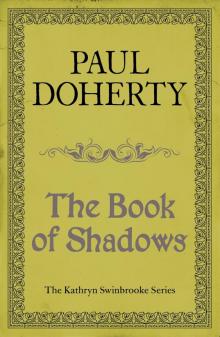 Book of Shadows
Book of Shadows The Merchant of Death
The Merchant of Death Dark Queen Waiting
Dark Queen Waiting Devil's Wolf
Devil's Wolf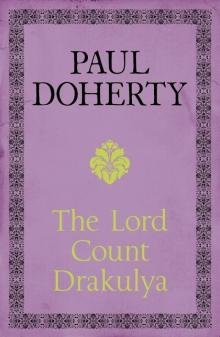 The Lord Count Drakulya
The Lord Count Drakulya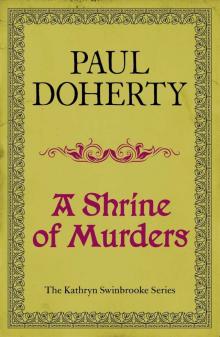 A Shrine of Murders
A Shrine of Murders The Eye of God
The Eye of God A Maze of Murders
A Maze of Murders The Hangman's Hymn
The Hangman's Hymn The Godless
The Godless Death's Dark Valley
Death's Dark Valley Queen of the Night ar-4
Queen of the Night ar-4 Ghostly Murders
Ghostly Murders Saintly Murders
Saintly Murders The Field of Blood
The Field of Blood Hugh Corbett 10 - The Devil's Hunt
Hugh Corbett 10 - The Devil's Hunt Assassin in the Greenwood hc-7
Assassin in the Greenwood hc-7 The Song of the Gladiator
The Song of the Gladiator Hugh Corbett 17 - The Mysterium
Hugh Corbett 17 - The Mysterium The Mask of Ra
The Mask of Ra An Evil Spirit Out of the West (Ancient Egyptian Mysteries)
An Evil Spirit Out of the West (Ancient Egyptian Mysteries) Herald of Hell
Herald of Hell Mathild 03 - The Darkening Glass
Mathild 03 - The Darkening Glass Dark Serpent (Hugh Corbett 18)
Dark Serpent (Hugh Corbett 18) House of the Red Slayer smoba-2
House of the Red Slayer smoba-2 The Gallows Murders
The Gallows Murders The Straw Men
The Straw Men The Great Revolt
The Great Revolt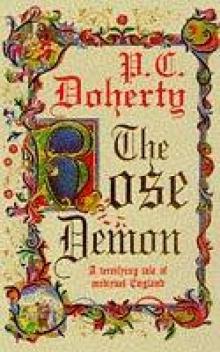 The Rose Demon
The Rose Demon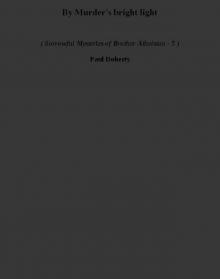 By Murder's bright light smoba-5
By Murder's bright light smoba-5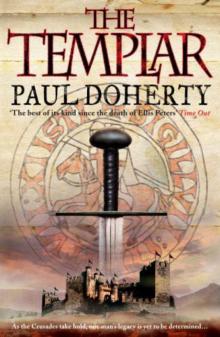 Templar
Templar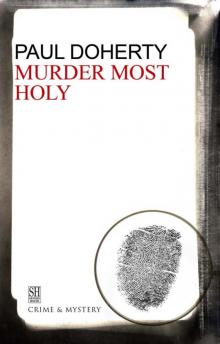 Murder Most Holy
Murder Most Holy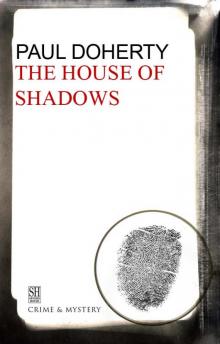 The House of Shadows
The House of Shadows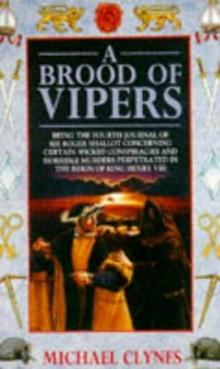 A Brood of Vipers srs-4
A Brood of Vipers srs-4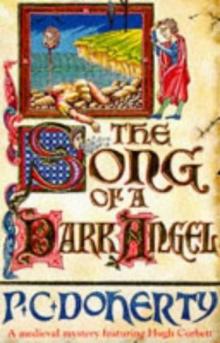 Song of a Dark Angel hc-8
Song of a Dark Angel hc-8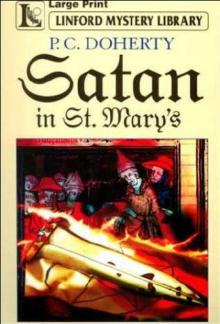 Satan in St Mary hc-1
Satan in St Mary hc-1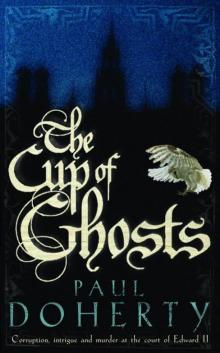 Mathilde 01 - The Cup of Ghosts
Mathilde 01 - The Cup of Ghosts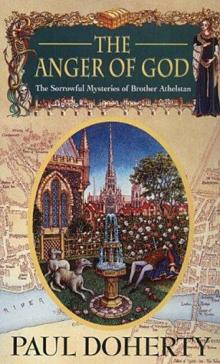 The Anger of God smoba-4
The Anger of God smoba-4 Isabella and the Strange Death of Edward II
Isabella and the Strange Death of Edward II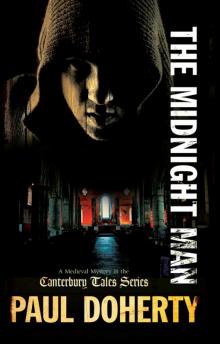 The Midnight Man ctomam-7
The Midnight Man ctomam-7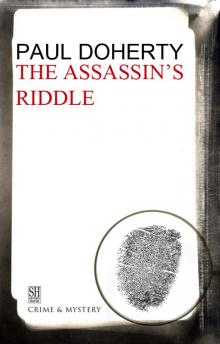 The Assassin's Riddle
The Assassin's Riddle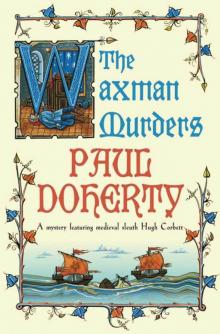 Hugh Corbett 15 - The Waxman Murders
Hugh Corbett 15 - The Waxman Murders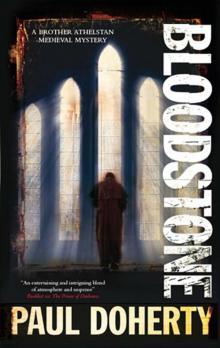 Bloodstone smoba-11
Bloodstone smoba-11 Bloodstone
Bloodstone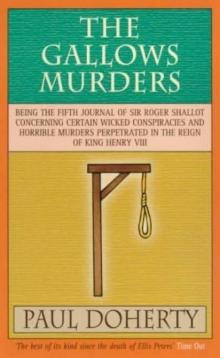 The Gallows Murders srs-5
The Gallows Murders srs-5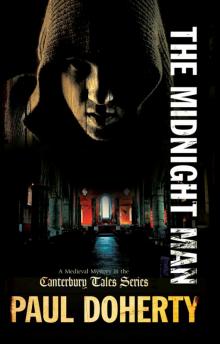 The Midnight Man
The Midnight Man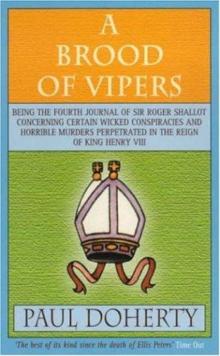 A Brood of Vipers
A Brood of Vipers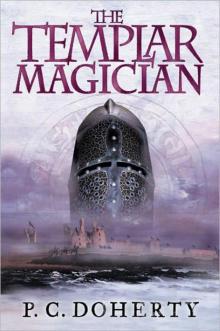 The Templar Magician
The Templar Magician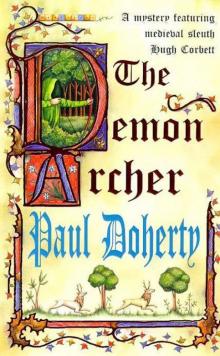 Hugh Corbett 11 - The Demon Archer
Hugh Corbett 11 - The Demon Archer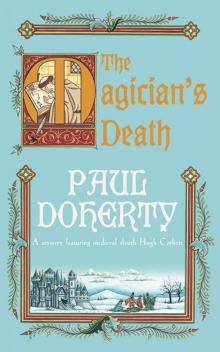 Hugh Corbett 14 - The Magician's Death
Hugh Corbett 14 - The Magician's Death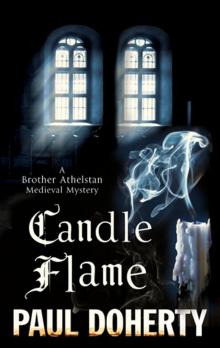 Candle Flame
Candle Flame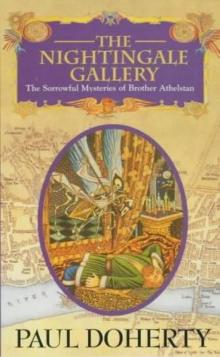 The Nightingale Gallery smoba-1
The Nightingale Gallery smoba-1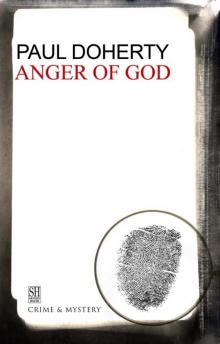 The Anger of God
The Anger of God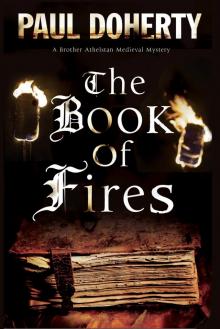 The Book of Fires
The Book of Fires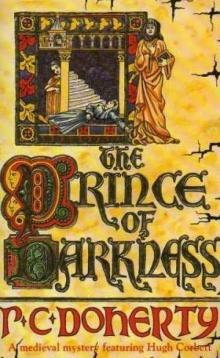 Prince of Darkness hc-5
Prince of Darkness hc-5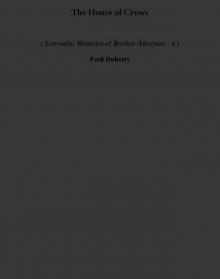 The House of Crows smoba-6
The House of Crows smoba-6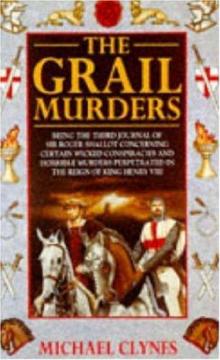 The Grail Murders
The Grail Murders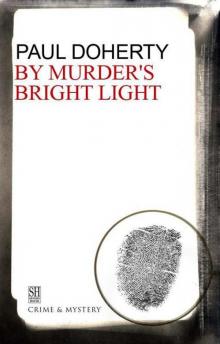 By Murder's Bright Light
By Murder's Bright Light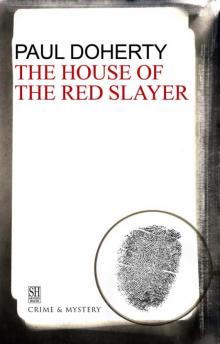 House of the Red Slayer
House of the Red Slayer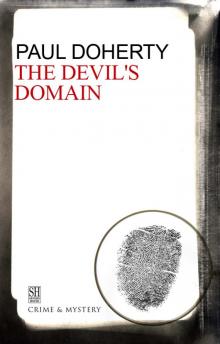 The Devil's Domain
The Devil's Domain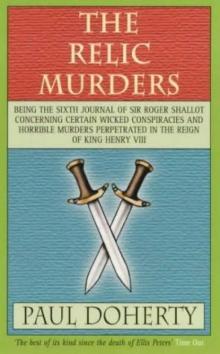 The Relic Murders srs-6
The Relic Murders srs-6 A haunt of murder ctomam-6
A haunt of murder ctomam-6 The Straw Men smoba-12
The Straw Men smoba-12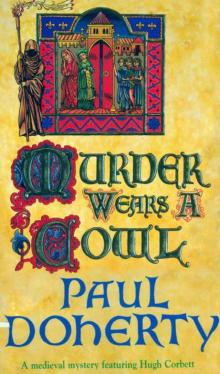 Hugh Corbett 06 - Murder Wears a Cowl
Hugh Corbett 06 - Murder Wears a Cowl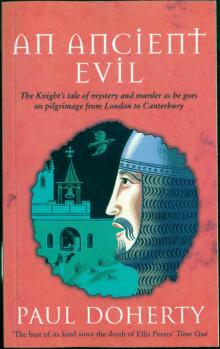 An Ancient Evil (Canterbury Tales Mysteries)
An Ancient Evil (Canterbury Tales Mysteries)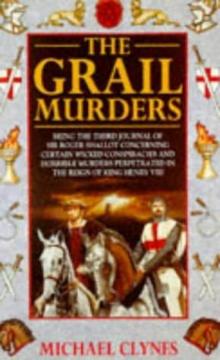 The Grail Murders srs-3
The Grail Murders srs-3 The Fate of Princes
The Fate of Princes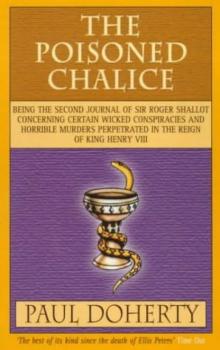 The poisoned chalice srs-2
The poisoned chalice srs-2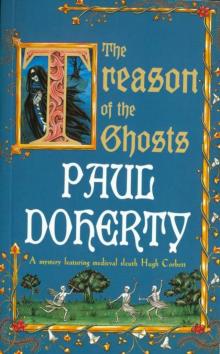 Hugh Corbett 12 - The Treason of the Ghosts
Hugh Corbett 12 - The Treason of the Ghosts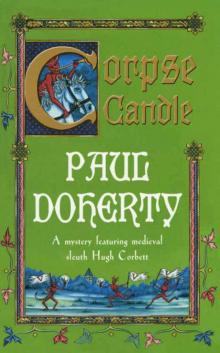 Hugh Corbett 13 - Corpse Candle
Hugh Corbett 13 - Corpse Candle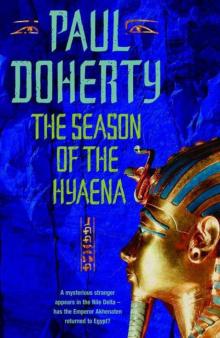 The Season of the Hyaena (Ancient Egyptian Mysteries)
The Season of the Hyaena (Ancient Egyptian Mysteries)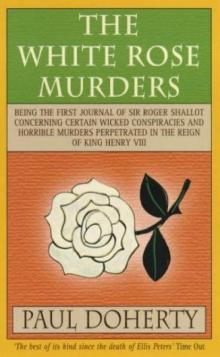 The White Rose murders srs-1
The White Rose murders srs-1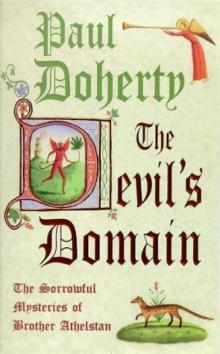 The Devil's domain smoba-8
The Devil's domain smoba-8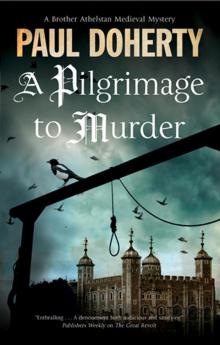 A Pilgrimage to Murder
A Pilgrimage to Murder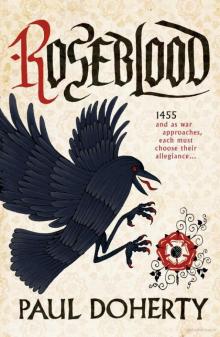 Roseblood
Roseblood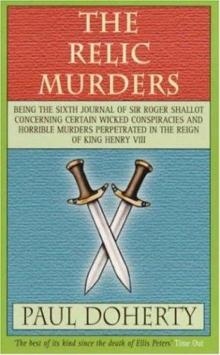 The Relic Murders
The Relic Murders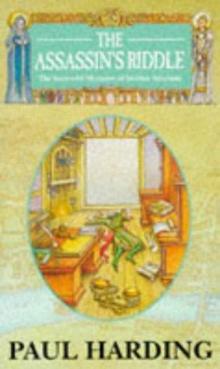 The Assassin's riddle smoba-7
The Assassin's riddle smoba-7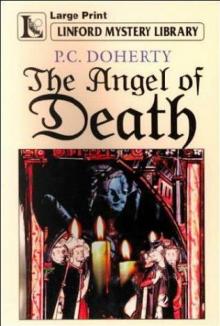 Angel of Death hc-4
Angel of Death hc-4 Dark Queen Rising
Dark Queen Rising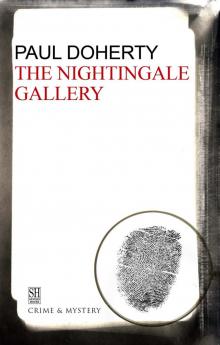 The Nightingale Gallery
The Nightingale Gallery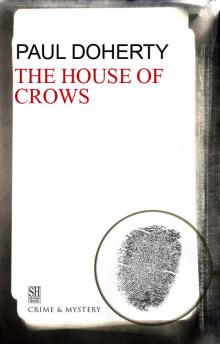 The House of Crows
The House of Crows Spy in Chancery hc-3
Spy in Chancery hc-3